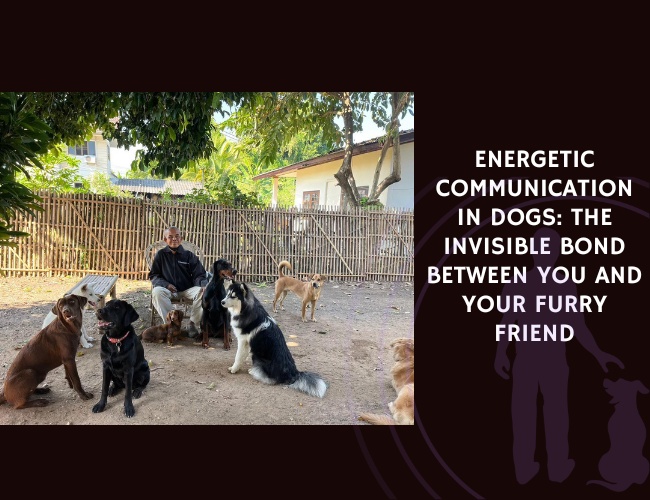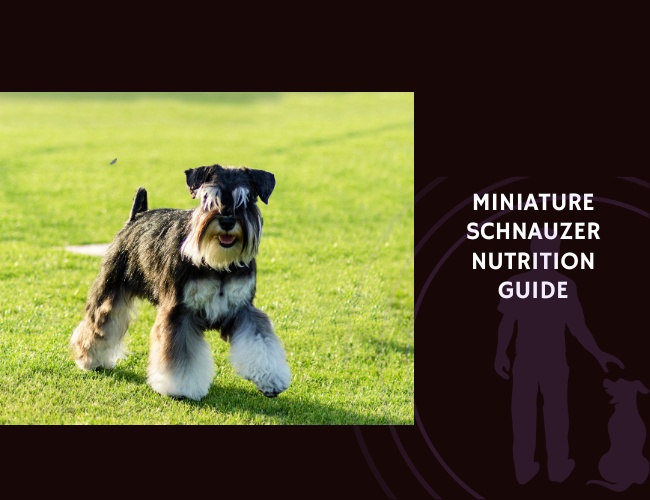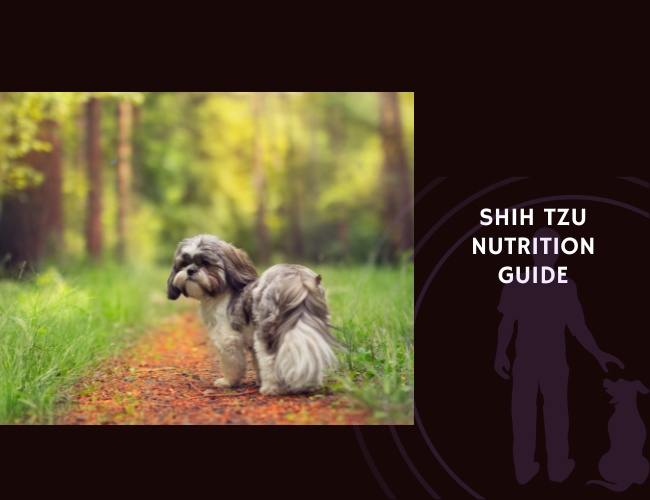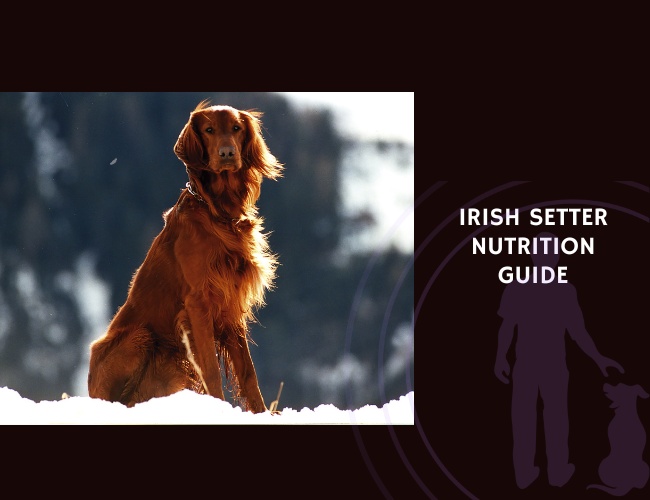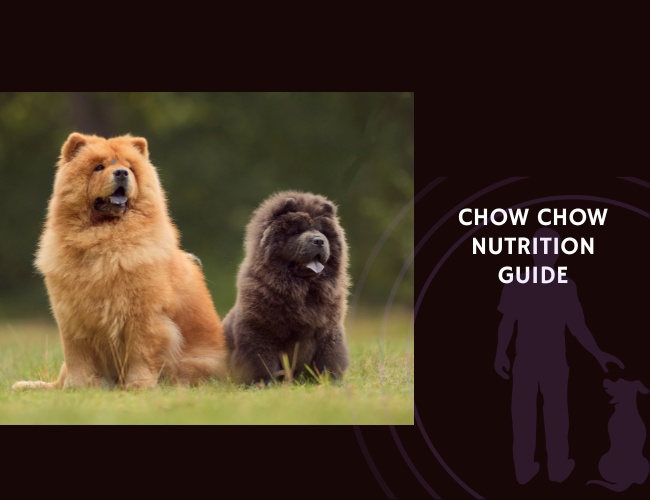Introduction
Have you ever wondered why your dog seems to know when you’re feeling down, even before you’ve said a word? Or noticed how your pup’s behavior changes when you’re stressed, despite your best efforts to appear calm? Welcome to the fascinating world of energetic communication—the invisible layer of connection that exists between you and your canine companion.
Beyond the tail wags, barks, and body language we can easily observe, there’s a deeper level of communication happening between dogs and humans. This subtle exchange of energy and emotion shapes every interaction we have with our four-legged friends, influencing everything from training success to the strength of our bond. Let us guide you through this remarkable aspect of canine-human relationships that science is only beginning to understand. 🐾
Understanding Energetic Communication
What is Energetic Communication?
When we talk about energetic communication in dogs, we’re exploring something far more nuanced than simple body language or vocalization. This invisible form of connection refers to the non-verbal transmission of emotional and physiological states between you and your dog—a kind of silent conversation that happens beneath conscious awareness.
Think of it as an emotional Wi-Fi network between species. Your dog doesn’t just see and hear you; they’re constantly tuning into your internal state through a combination of subtle sensory inputs, autonomic nervous system mirroring, and what scientists call “limbic resonance.” This means your furry friend is picking up on signals you might not even realize you’re sending.
The Science Behind the Connection
Recent research has revealed fascinating insights into how this energetic exchange works. Scientists have identified several measurable physiological markers that help us understand this phenomenon:
Heart Rate Variability (HRV) – Studies show that dogs and their humans often synchronize their heart rhythms during close interaction, creating a biological harmony that strengthens their bond.
Brain Activity Patterns – Using fMRI technology, researchers have discovered specific brain regions in dogs dedicated to processing human emotions, even without obvious visual or auditory cues.
Electroencephalography (EEG) Readings – These reveal how dogs’ brainwave patterns can mirror those of their human companions, especially during moments of deep connection or shared relaxation.
What makes this even more remarkable is that dogs have evolved this capacity specifically for interacting with humans. After thousands of years of domestication, your dog is essentially a specialist in reading human energy—more so than any other species on Earth.
How Dogs Read Human Energy
Beyond What Meets the Eye
Your dog’s ability to read your emotional state goes far beyond watching your facial expressions or listening to your tone of voice. They’re picking up on an intricate web of subtle cues that paint a complete picture of your internal world.
Dogs detect emotional valence (whether you’re feeling positive or negative) and arousal levels (how calm or excited you are) through multiple sensory channels simultaneously. This includes:
Olfactory Cues – Did you know that your emotional state actually changes your scent? Dogs can detect chemical changes in your body associated with different emotions, from the stress hormone cortisol to the bonding hormone oxytocin.
Micro-expressions and Micro-movements – Those tiny, involuntary facial movements and body shifts that last mere fractions of a second? Your dog notices them all.
Energetic Field Changes – While this might sound mystical, research suggests dogs are sensitive to electromagnetic fields and subtle energy shifts that occur with emotional changes.
The Role of Mirror Neurons
One of the most fascinating discoveries in neuroscience is the presence of mirror neuron systems in both dogs and humans. These specialized brain cells fire both when we perform an action and when we observe that same action in others—or in this case, when we experience an emotion and when we perceive it in another being.
This neurological mirroring creates a kind of emotional contagion between you and your dog. When you’re anxious, your dog’s mirror neurons help them literally feel a version of your anxiety. When you’re calm and happy, they experience that too. It’s why your mood can be so infectious to your four-legged companion.
Individual Sensitivity Variations
Just as people vary in their emotional sensitivity, dogs also have different thresholds for picking up energetic cues. Some dogs are like emotional sponges, absorbing every subtle shift in their environment, while others might be less reactive to these invisible signals.
Factors that influence a dog’s energetic sensitivity include:
- Breed characteristics and genetic predispositions
- Early socialization experiences
- Past trauma or positive bonding experiences
- Individual temperament and personality
- Age and cognitive development
Understanding your dog’s unique sensitivity level is crucial for effective communication and training.
Signal vs. Noise in Canine Behavior
Decoding Intentional Communication
One of the biggest challenges in understanding energetic communication is distinguishing between what your dog is intentionally trying to tell you and what’s simply involuntary “noise” from their autonomic nervous system.
Intentional Signals might include:
- Direct eye contact paired with specific body positioning
- Deliberate approach or withdrawal behaviors
- Consistent behavioral patterns in specific contexts
- Clear cause-and-effect responses to your energy
Autonomic “Noise” often appears as:
- Stress-related physiological responses (panting, trembling)
- Involuntary reactions to environmental stimuli
- Overflow behaviors from excitement or anxiety
- Unconscious mirroring of your stress state
Learning to differentiate between these two categories is essential for accurate behavior interpretation and effective training.
The Handler’s Role in Communication Clarity
Your consistency and emotional regulation play a massive role in how clearly your dog can read and respond to your signals. When you’re sending mixed energetic messages—saying “it’s okay” while feeling anxious, for example—you create static in the communication channel.
This energetic inconsistency can manifest in several ways:
- Verbal commands that contradict your body language
- Attempting to hide negative emotions behind false cheerfulness
- Rapid shifts between different emotional states
- Unconscious tension while trying to appear relaxed
Your dog is remarkably adept at detecting these contradictions, often trusting your energy over your words. This is why the old saying “fake it till you make it” rarely works with our canine companions—they see right through the act.
The Human Energy Impact
How Your State Affects Your Dog
Your emotional and energetic state doesn’t just influence your dog—it can fundamentally alter their behavior, stress levels, and even their long-term temperament. This responsibility might feel overwhelming, but understanding it is the first step toward creating a more harmonious relationship.
When You’re Calm and Centered:
- Your dog’s cortisol levels decrease
- Their ability to learn and retain training improves
- Behavioral problems often diminish naturally
- The trust bond strengthens
When You’re Stressed or Anxious:
- Your dog may become hypervigilant
- Reactive behaviors can increase
- Training effectiveness decreases
- Existing behavioral issues may worsen
The Power of Breath and Presence
One of the most underestimated tools in energetic communication is your breath. Dogs are incredibly sensitive to breathing patterns, and your breath directly influences your energetic signature.
Deep, slow breathing communicates safety and calm, while shallow, rapid breathing signals potential danger or stress. By consciously regulating your breath before and during interactions with your dog, you can dramatically improve communication clarity and reduce reactive behaviors.
Your presence—the quality of attention you bring to interactions—also matters immensely. Being fully present with your dog, rather than distracted or mentally elsewhere, creates a clear energetic connection that enhances understanding and strengthens your bond.
Micro-movements and Postural Awareness
Every tiny movement you make sends information to your sensitive canine companion. This includes:
- The tension in your shoulders
- The grip on the leash
- Your walking pace and rhythm
- Subtle shifts in body positioning
Becoming aware of these micro-communications allows you to send clearer, more intentional signals to your dog. For instance, relaxing your shoulders and softening your grip on the leash can help calm an anxious dog more effectively than any verbal reassurance.
Present. Tuned. Transparent.
Your dog feels what you suppress.
Long before you speak, they’ve read the tension in your breath, the conflict behind your smile. Dogs aren’t decoding your words—they’re absorbing your state. In the space between presence and pretense, they choose the truth.
Energetic clarity is behavioural clarity.
Mixed signals breed mistrust. A shaky “stay” or anxious “it’s okay” doesn’t reassure—it confuses. Training isn’t just cues and timing. It’s the energy you bring, the coherence between your inner state and outward command.


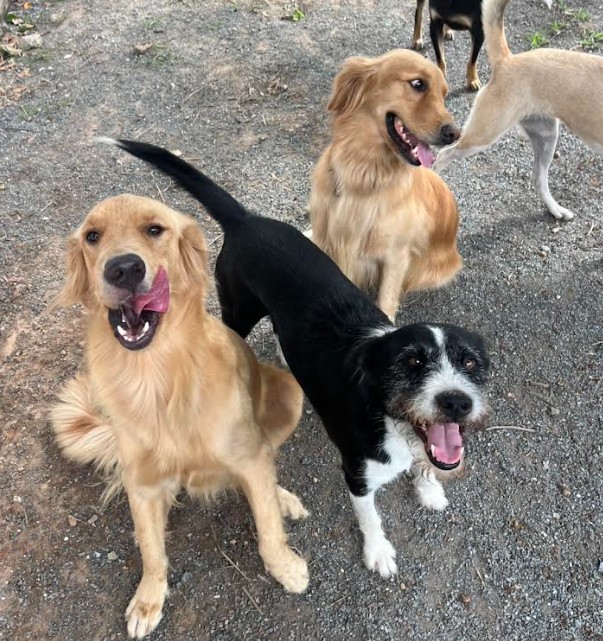
Connection is not control—it’s resonance.
You don’t lead your dog with muscle or words. You lead through nervous system alignment, mirrored calm, shared rhythm. It’s not dominance. It’s limbic resonance. And it starts with you.
Common Energetic Miscommunications
When Energy and Words Don’t Match
One of the most frequent sources of confusion in dog-human relationships occurs when our energetic state contradicts our verbal communication. You might notice this happening in situations like:
The Anxious “It’s Okay” – Telling your dog everything is fine while your body screams danger. Your dog will almost always believe your energy over your words, potentially increasing their anxiety rather than soothing it.
The Tense “Good Dog” – Praising your dog through gritted teeth when you’re actually frustrated. Dogs pick up on this incongruence immediately, which can create confusion and stress.
The Worried “Come” – Calling your dog with an underlying energy of fear or concern that they might not listen. This energetic doubt can actually make them less likely to respond.
Overstimulation and Energy Overflow
In our fast-paced world, both humans and dogs can easily become overstimulated, creating a cascade of energetic miscommunication. This often shows up as:
- Excessive excitement that spirals out of control
- Inability to settle or focus
- Reactive behaviors that seem to come from nowhere
- Difficulty following known commands
Understanding how to manage energy levels—both yours and your dog’s—is crucial for preventing these overflow situations.
Leash Communication Confusion
The leash creates a direct physical connection between you and your dog, making it a powerful conduit for energetic communication. Unfortunately, it’s also where many miscommunications occur.
Common leash-related energy issues include:
- Unconscious tension traveling down the leash
- Mixed signals between forward movement and restraint
- Emotional reactions to seeing other dogs or people
- Anticipatory stress before walks even begin
Learning to maintain a neutral, calm energy while leash walking can transform your daily outings from stressful to enjoyable.
Practical Applications for Better Communication
Developing Energetic Awareness
Improving your energetic communication with your dog starts with developing greater self-awareness. Here are practical steps you can take:
Daily Check-ins – Before interacting with your dog, take a moment to assess your internal state. Are you carrying stress from work? Anxiety about something unrelated? Acknowledging these feelings helps prevent unconscious transmission to your dog.
Body Scanning – Regularly scan your body for areas of tension. Pay special attention to:
- Jaw and facial muscles
- Shoulders and neck
- Hands and arms
- Breathing patterns
Emotional Regulation Practice – Develop techniques for shifting your emotional state before important interactions. This might include:
- Deep breathing exercises
- Brief meditation or grounding practices
- Physical movement to release tension
- Positive visualization
Creating Clear Energy Boundaries
Just as important as being aware of your energy is learning to create healthy energetic boundaries with your dog. This doesn’t mean being cold or distant—rather, it means being intentional about the energy you share.
Establish Calm Zones – Designate certain times and spaces for calm, regulated energy. This might be:
- A specific relaxation mat or bed
- Quiet time after meals
- Pre-bedtime wind-down routines
Practice Energy Matching – Instead of always expecting your dog to match your energy, practice matching theirs when appropriate. If they’re calm, meet them there. If they’re playful, engage with matched enthusiasm.
Set Energetic Intentions – Before training sessions or challenging situations, set a clear intention for the energy you want to maintain. Visualize yourself embodying that energy throughout the interaction.
Strengthening the Energetic Bond
Building a stronger energetic connection with your dog is an ongoing process that deepens over time. Here are ways to nurture this invisible bond:
Synchronized Activities – Engage in activities that naturally sync your energy:
- Peaceful walks in nature
- Quiet sitting or lying together
- Synchronized breathing exercises
- Gentle massage or TTouch
Mindful Interaction – Practice being fully present during interactions:
- Put away phones and distractions
- Focus on the sensory experience of being with your dog
- Notice and appreciate small moments of connection
Energy Games – Play games that develop energetic awareness:
- “Settle” games where you both practice calming down
- “Energy matching” where you mirror each other’s energy levels
- “Find the calm” where you help your dog regulate after excitement
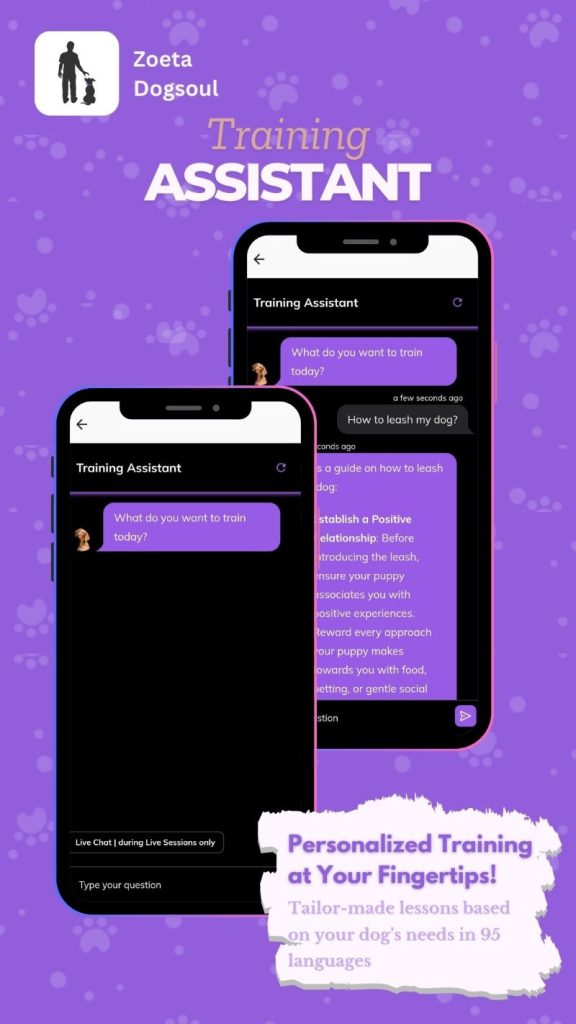
Training Through Energy
Beyond Traditional Commands
When you understand energetic communication, training becomes less about commanding and more about inviting collaboration. Your dog begins responding not just to words but to the entire energetic invitation you’re extending.
This approach transforms common training scenarios:
Recall Training – Instead of desperately calling a distracted dog, you create an energetic pull of joy and connection that makes coming to you irresistible.
Leash Walking – Rather than constantly correcting pulling, you establish an energetic bubble of calm movement that your dog naturally wants to maintain.
Settling on Command – You don’t just tell your dog to relax; you embody the relaxation you want to see, making it easier for them to follow suit.
The Role of Intention in Training
Your intention—the energetic direction of your thoughts and desires—plays a crucial role in training success. Dogs seem to respond not just to what we do but to what we truly intend.
Clear intention involves:
- Visualizing the desired outcome
- Believing in your dog’s ability to succeed
- Maintaining positive expectations
- Releasing attachment to perfection
When your intention is clear and positive, your dog picks up on this energetic clarity and is more likely to respond accordingly.
Troubleshooting Energetic Challenges
When Your Dog Mirrors Your Stress
It’s natural to feel guilty when you realize your stress is affecting your dog, but remember—this mirroring is actually a sign of your deep connection. Instead of viewing it as a problem, see it as valuable feedback about your own state.
Strategies for breaking the stress cycle:
- Acknowledge the mirroring without judgment
- Take breaks to regulate your own nervous system
- Use your dog’s calm moments to practice co-regulation
- Seek support for your own stress management
Dealing with Energetic Sensitivity
Some dogs are extraordinarily sensitive to energetic shifts, which can be both a gift and a challenge. If your dog falls into this category:
Create Predictable Routines – Consistency helps sensitive dogs feel secure Provide Energetic Breaks – Allow time away from stimulating environments Build Confidence Gradually – Use positive experiences to increase resilience Consider Environmental Factors – Minimize exposure to chaotic energy when possible
Supporting Senior Dogs
As dogs age, their energetic communication patterns may change. Senior dogs might:
- Become more sensitive to energy shifts
- Need clearer, calmer signals
- Benefit from gentler energetic interactions
- Require more time to process energetic information
Adapting your communication style to meet your senior dog’s changing needs strengthens your bond during their golden years. 🧡
Building Long-term Energetic Health
Creating an Emotionally Balanced Home
Your home environment plays a crucial role in supporting healthy energetic communication. Consider these factors:
Physical Space – Create calm zones and active zones to support different energy states Routine and Rhythm – Establish predictable patterns that support energetic balance Family Dynamics – Ensure all family members understand energetic communication Environmental Enrichment – Provide appropriate outlets for your dog’s energy
The Ripple Effect
As you develop greater energetic awareness and communication skills with your dog, you might notice positive changes extending beyond your canine relationship:
- Improved awareness of your own emotional states
- Better communication in human relationships
- Increased ability to self-regulate
- Greater overall mindfulness and presence
This ripple effect demonstrates the profound impact that conscious energetic communication can have on your entire life.
Conclusion: Embracing the Invisible Connection
Understanding energetic communication opens up a whole new dimension in your relationship with your dog. It’s not about becoming perfect or never feeling stressed—it’s about developing awareness, practicing intentionality, and embracing the beautiful complexity of interspecies connection.
Remember, every dog is unique in their energetic sensitivity and communication style. What works for one dog might not work for another, and that’s perfectly okay. The journey of discovering your individual dog’s energetic language is part of what makes your bond special.
As you continue exploring this invisible layer of communication, be patient with yourself and your furry friend. Some days will be clearer than others, and that’s natural. What matters is your commitment to understanding and honoring this deeper level of connection.
The energetic bond between you and your dog is a precious gift—one that transcends words and touches the very heart of what it means to share your life with another being. By nurturing this invisible connection, you’re not just improving behavior or training outcomes; you’re deepening a relationship that enriches both of your lives in countless ways.
So the next time you’re with your dog, take a moment to tune into the energetic conversation happening between you. You might be surprised by how much you’ve been communicating all along. 🐾

